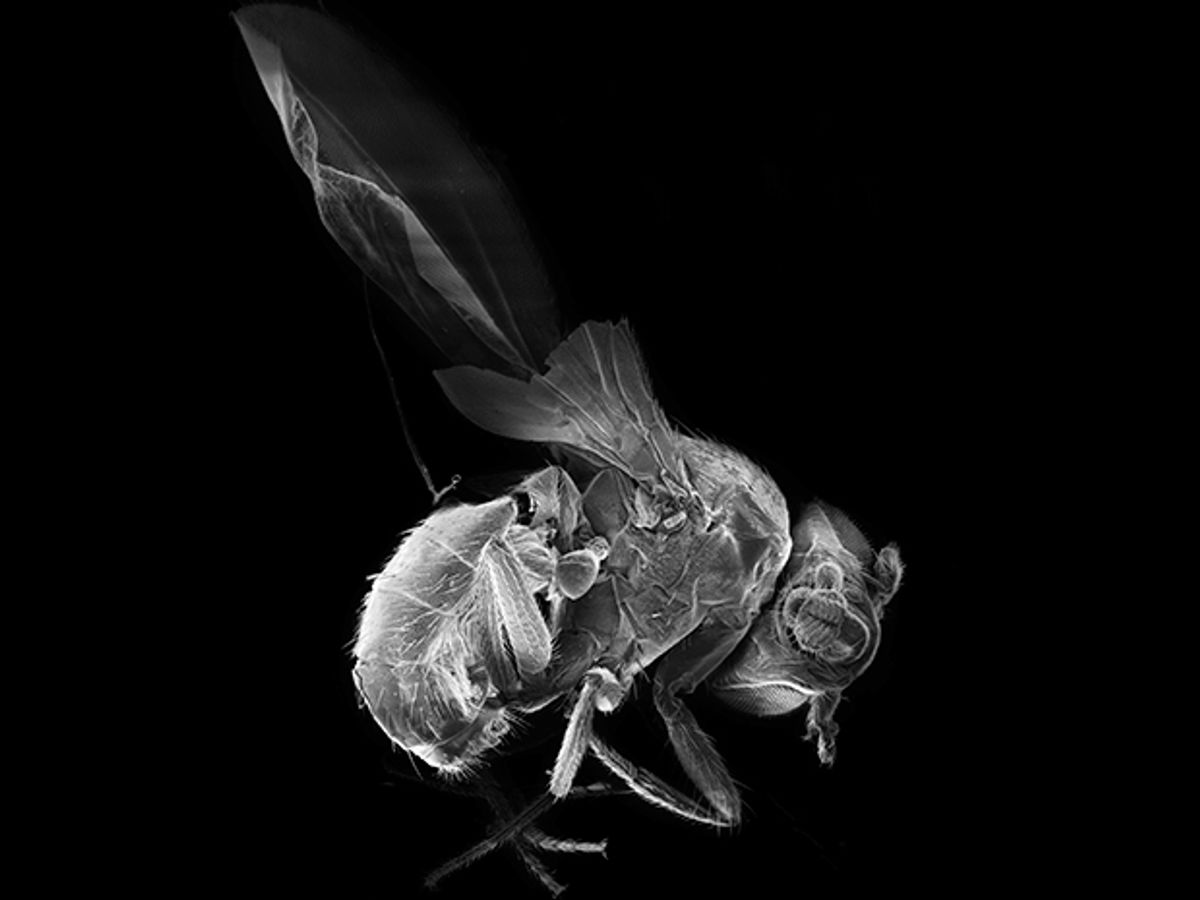The anesthetized fruit fly lay immobile on a microscope slide, its wings taped to the glass, while scientists directed a blue laser at its abdomen.
The laser beam didn’t harm the fly. Instead, the light pulsed 10 times per second in a precise and regular cadence—and the fly’s heart beat 10 times per second in exact synchronicity. The researchers had invented an optical pacemaker, which they describe today in the journal Science Advances.
Typical pacemakers, which were first developed in the 1950s, rely on the fact that the heart is an electric organ. Each natural heartbeat is caused by an electrical impulse that ripples through the cardiac cells, making them contract and push blood through the heart and around the body. Implanted electric pacemakers use electrodes to deliver a steady series of impulses to the cardiac tissue, helping hearts that have trouble maintaining a regular rhythm.
The optical pacemaker instead triggers those cardiac cell contractions with pulses of light, using the hot new research technique of optogenetics. The researchers first bred a strain of genetically altered fruit flies whose cardiac cells contained a light-sensitive protein taken from algae. Then they directed the laser at a fly’s heart, shining it through the fly’s intact exoskeleton, activating those protein-containing cells.
This optical stimulation offers some advantages over traditional methods, explains Chao Zhou, an assistant professor of bioengineering at Lehigh University. An electric pacemaker must be surgically implanted, and the impulses it emits can affect cells beyond the cardiac tissue, while Zhou’s optogenetic method is non-invasive and only triggers the targeted cells.

This isn’t the world’s first optogenetic pacemaker. The paper notes that research groups have done similar work in zebrafish and mice, two species that are commonly used in scientific experiments. But developing the technique for fruit flies can enable new kinds of research in cardiology, Zhou told IEEE Spectrum in a phone interview. The optical stimulation of zebrafish hearts could only be performed when the fish were at an early development stage, when light could reach the heart through the tissue. And for the mouse study, the scientists had to surgically open the chest wall. “Their approach is exciting, but it’s heavily invasive,” Zhou says. “You can only do it once.”
With the flies, however, Zhou’s team could non-invasively stimulate their hearts at all developmental stages: from larva to pupa to adult. Scientists can therefore use this technique in prolonged studies of cause and effect. In flies that are genetically predisposed to have heart attacks, for example, scientists could use the optical pacemaker to regulate a fly’s heartbeat in its larval stage, and see what impact that pacing has on the adult fly. “Maybe if you have steady pacing in the larva, you don’t have those problems,” Zhou says. “That’s just a hypothesis—but our technology enables researchers to test it.”
The fruit fly is tremendously useful in medical research, as its genome is about 80 percent the same as the human genome, and many human diseases have corrolaries in flies. But one can’t help but wonder, will the optical pacemaker ever find use in human beings?
“There are a lot of challenges to doing it in humans,” says Zhou. One obvious stumbling block is how to deliver light to human cardiac tissue without surgically implanting a light source. The laser Zhou’s team used on its fruit flies wouldn’t make it through a person’s flesh and bone, but Zhou notes that near-infrared light can penetrate deep into tissue. Theoretically, human cardiac cells could be augmented with a protein that responds to near-infrared, and thus could be triggered with an external device. The problem is that this kind of light scatters in the body, so researchers would need to develop a way to focus the light and direct it at the heart. Still, Zhou says: “It’s not impossible.”
Eliza Strickland is a senior editor at IEEE Spectrum, where she covers AI, biomedical engineering, and other topics. She holds a master’s degree in journalism from Columbia University.



